Fitness
These are the many advantages of riding a stationary bike
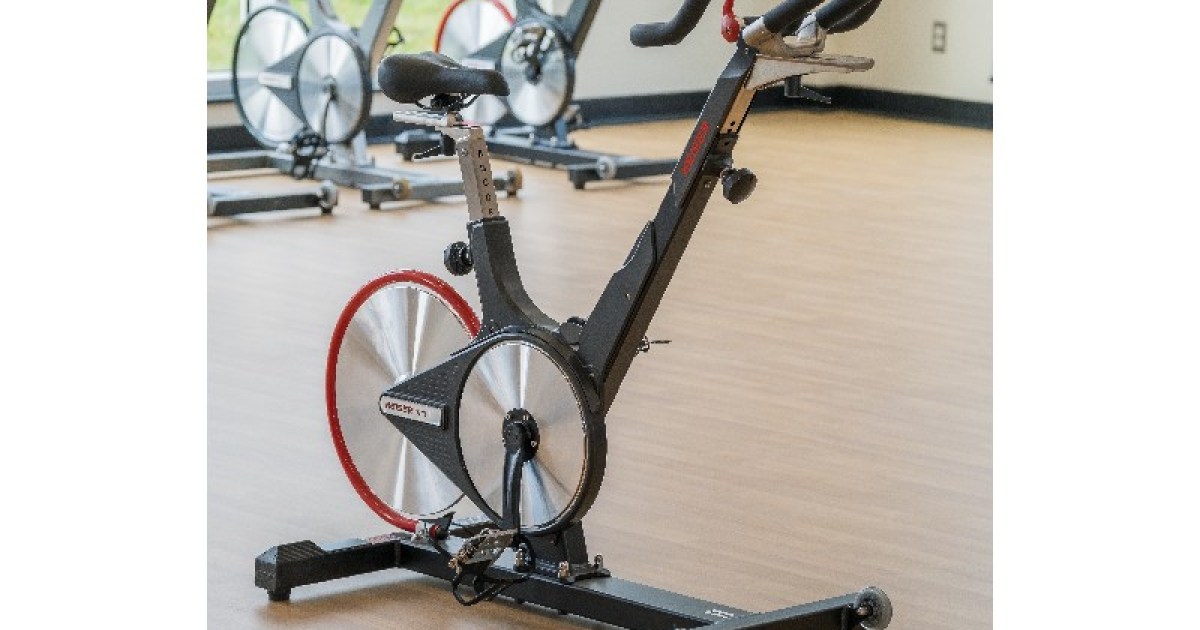
Riding an exercise bike can be a great workout with quite a few physical and mental health benefits. From upright stationary bikes and recumbent bikes to indoor cycles and spin bikes, exercise bikes are safe, low impact, and easy to use. Much like a treadmill, an exercise bike can also be used by people of varying fitness levels, as the intensity and resistance can be modulated. Moreover, because there are different types of exercise bikes, the range of potential stationary bike workouts is vast.
So, whether you’re a fan of vigorous high-intensity interval training (HIIT) on a Peloton or indoor cycle, crank the exercise bike pedals in challenging spin classes, or ride a stationary bike for an easy cardio warmup before a hard weightlifting workout at the gym, keep reading to learn about stationary bike benefits.
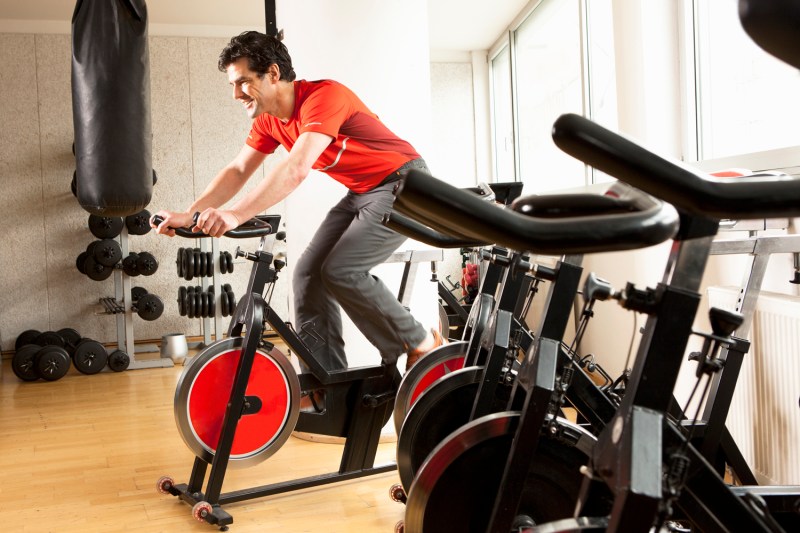
What is an exercise bike?
It may seem like an obvious answer, but the term “exercise bike” actually can refer to a range of different pieces of exercise equipment that all share bike characteristics but have their own subtle differences. In general, an exercise bike refers to a stationary bike used for indoor cycling workouts. Like a traditional outdoor bicycle, exercise bikes have some form of pedals and seat, but usually only have one wheel, which is often not visible.
The primary types of exercise bikes include upright stationary bikes, recumbent bikes, and indoor cycles (also called spin bikes). Some people also consider riding an outdoor bike on an indoor bike trainer to be a form of an exercise bike.
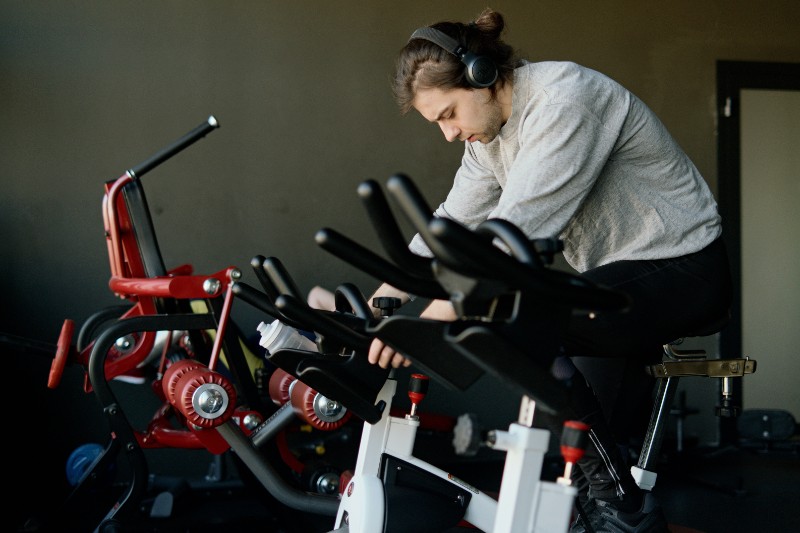
Benefits of riding a stationary bike
Though there are notable differences in each of these categories of stationary bikes, the benefits of riding exercise bikes are generally universal across the board. That said, some types of stationary bikes are better for achieving certain goals than others
1. Stationary bike workouts improve cardiovascular health and fitness
Riding an exercise bike can increase your aerobic fitness and improve the health of your heart and lungs. A stationary bike routine is an easy way to improve your endurance by gradually increasing the duration of your rides.
2. Stationary bike workouts increase leg strength
Stationary bikes can increase the strength of your quads and hamstrings. Your glutes, calves, and core can also be worked to some degree. To boost the muscular demand, be sure to crank up the resistance.
3. Stationary bike workouts burn calories and can promote weight loss
Studies have found that stationary bikes are an effective way to burn fat and lose weight, as well as reduce waist circumference, a measure of abdominal fat or “belly fat.” Though the benefits of exercise go far beyond weight loss, you can’t argue with the metabolic perks of a good workout. Exercise bike workouts can burn upwards of 400-600 calories per hour, depending on your weight and the intensity of your effort. Moreover, if you cycle at a vigorous effort or engage in intervals, your metabolic rate may stay stoked for several hours after you’re done exercising.
4. Stationary bike workouts are low-impact
One of the primary benefits of stationary bikes over other treadmills and lots of other exercise modalities is that exercise bikes are great for people with joint pain or musculoskeletal injuries. Cycling is a great form of low-impact exercise, so an exercise bike can be a pain-free workout option for those with acute and chronic joint pain. Moreover, if you are a runner or play high-impact sports, stationary bikes can serve as a perfect adjunct to training by reducing stress on the joints while still providing a workout.
5. Stationary bike workouts can improve markers of health
Studies have found that regularly engaging in stationary bike workouts can improve markers of health. For example, exercise bike workouts can reduce blood pressure, lower cholesterol and blood lipids, and improve blood sugar regulation. As such, riding an exercise bike can reduce your risk of diseases such as cardiovascular disease, metabolic syndrome, diabetes, and atherosclerosis.
6. Stationary bike workouts improve your mood
Have you ever stepped off your exercise bike after a tough workout and felt blissfully happy? If so, you’re familiar with the powerful effect of endorphins, the feel-good chemicals produced by the body in response to exercise. Riding a stationary bike can boost your mood, lower the risk of depression, decrease stress and anxiety, and improve feelings of overall well-being.
7. Stationary bikes are approachable for all levels of fitness
One of the best things about stationary bikes is that they can be used by almost anyone, no matter where they are on their fitness journey. Old, young, fit, novice, overweight, or muscular, most people can adjust the intensity and settings on an exercise bike to dial in an appropriate workload on a stationary bike. For example, a beginner battling knee pain and looking to lose some weight may start by building up endurance on a recumbent bike. A fit triathlete may use an exercise bike for high-intensity training during the off-season to boost overall fitness.
8. Stationary bikes are great for HIIT training
Exercise bikes are perfect for HIIT training because you can easily ramp up and down the intensity of your effort by changing the resistance and pedal speed (rotations per minute). You can also use the same exercise bike for easy warmups and cooldowns, so it’s a very versatile piece of equipment.
9. Stationary bike workouts are safe
Outdoor biking is inherently risky. Riding in traffic and the risk of falls introduces the chance of incurring a serious injury, or even death. Exercise bikes can provide the same fitness benefits as outdoor cycling in a much safer way. Particularly for seniors, people with poor balance, or those who live in cities or high-traffic areas, riding a stationary bike can be a smarter alternative than risking an outdoor bike ride.
10. Stationary bike workouts are more efficient than outdoor biking
If you’re a cyclist or simply looking for the most efficient workout, rest assured that you can almost always get a more efficient, challenging workout on an exercise bike than cycling outdoors. Without the need to stop at stoplights or the welcomed coasting breaks on downhill, indoor cycling workouts provide a more consistent, reliable hard effort.
11. Stationary bike workouts are more versatile than outdoor biking
With an exercise bike, you have the flexibility to work out at your convenience, regardless of the weather conditions. It provides a safe and convenient option for early morning or late-night workouts and even short bouts of exercise throughout the day, making it versatile and no-excuse fitness equipment. Added bonus: If something comes up mid-ride, you can simply stop and hop off, as opposed to having to bike all the way back home or to your starting location.
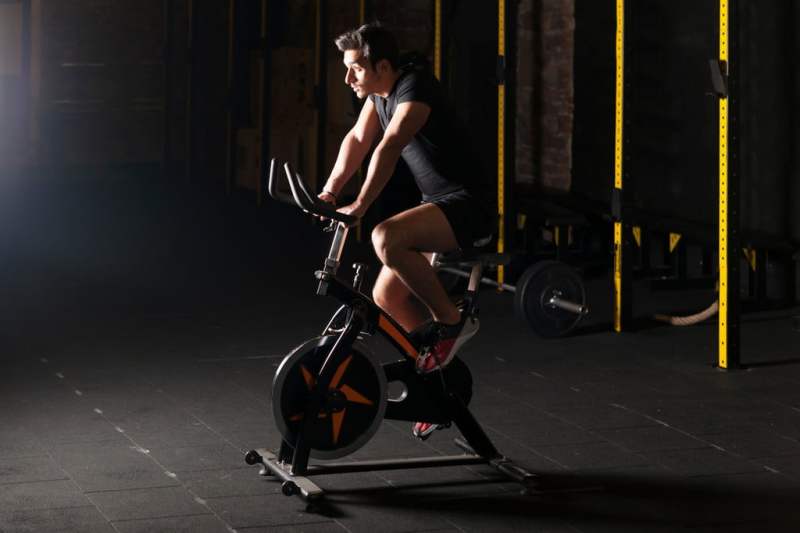
FAQs about stationary bike workouts
Is 30 minutes on a stationary bike enough?
Depending on your health goals and the intensity of your workout, 30 minutes on a stationary bike can be enough to improve your fitness and lose weight. Adults should aim for a minimum of 150 minutes of moderate-intensity aerobic exercise per week to reduce the risk of lifestyle diseases like cardiovascular disease. Therefore, riding a stationary bike for 30 minutes five days per week at a moderate intensity can help lower your risk of certain health conditions.
How long should you ride a stationary bike?
Stationary bike workouts can be anywhere from just a few minutes to a couple of hours, depending on your fitness and health goals. If you’re just getting started, aim to ride a stationary bike for 10-20 minutes and slowly build up to 30 minutes or more.
Are exercise bikes good for belly fat?
Exercise bikes can help reduce belly fat when combined with a nutritious, calorie-controlled diet. Harvard Health Publishing reports that 30 minutes of moderate-intensity stationary biking burns about 210 calories for a 125-pound person, 252 calories for a 155-pound person, and 292 calories for a 185-pound person. A 30-minute vigorous stationary bike workout burns approximately 315 calories for a 125-pound person, 378 calories for a 155-pound person, and 441 calories for a 185-pound person. If you weigh more than that, you’ll burn even more calories.
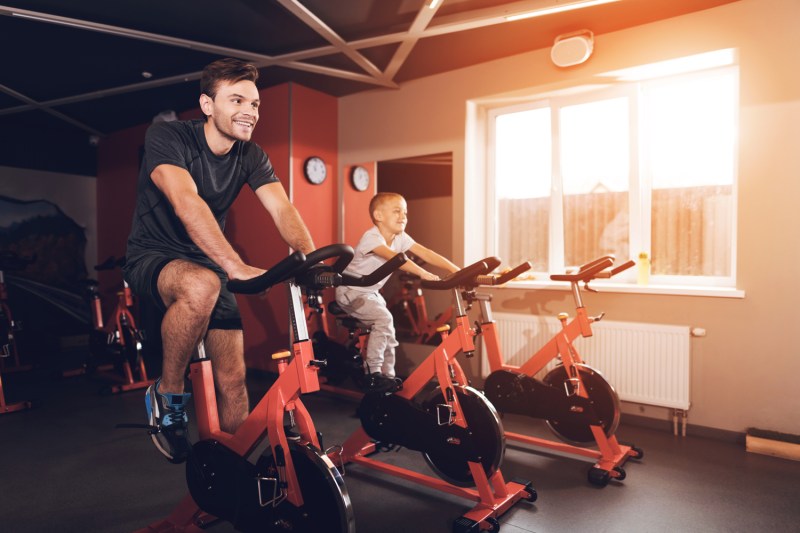
Sample stationary bike workout plan for beginners
Now that we’ve talked about the benefits of starting a stationary bike routine to help you get into shape, it’s time to get on the bike and ride. What’s that you say? You don’t know what to do? We’ve got you covered, if you’re just starting out on a stationary bike, here’s a good plan to get started until you get used to the bike.
First, make sure you have the seat adjusted properly for your height, as you don’t want the seat so high that you have to strain to pedal or so low that your knees hit your chin. After you get the seat adjusted, start with a short warmup at low to no resistance, about 5 minutes. After that, increase the resistance level so you feel challenged, but not so you’re at a pace where you can’t carry on a conversation. Alternate between reps of 1 minute at a fast pace and 3 minutes at a slower pace. After you’ve done this five times, drop the resistance back down and cool off for about 10 minutes.
Editors’ Recommendations

Fitness
Dancing your way to fitness: Study shows health benefits of free-form dance are comparable to conventional exercise

Forget sneakers or cleats and put on those boogie shoes, as new research from Northeastern University finds that dancing can have the same health benefits as running and other forms of exercise.
“You don’t necessarily need to have music, you don’t need to have any training or a teacher, anyone—ostensibly—can dance right where they are and get a health-enhancing dose of physical activity,” says Aston McCullough, assistant professor of physical therapy, human movement and rehabilitation sciences at Northeastern.
McCullough’s research on this topic appears in the journal PLOS ONE.
Scientists have long known that dancing has many benefits, improving everything from heart health and balance to flexibility and psychological well-being.
But McCullough notes that prior studies have not measured the “dose” of free-form dance given—leading to questions about how intensely people move when dancing however they wish, and whether free-form dance is enough to reach a moderate or vigorous intensity.
Prior studies have also focused primarily on specific types of dance—for instance, ballet or hip-hop.
McCullough wanted to take a different approach—focusing not on trained dancers practicing an established style, but the everyday person who just likes to boogie down.
“We wanted to do a study that could give us the most bang for the buck, if you will,” McCullough says. “We said that anyone who comes in can do whatever they want—just dance however you want to dance. In that way, it automatically increases the public health relevance of the study.”
So McCullough gathered roughly 50 participants ranging in age from 18 to 83 years old and had zero to 56 years of dance training experience. Then he let them cut a rug for five-minute intervals at self-determined moderate and vigorous levels, both with and without self-selected music.
Meanwhile, McCullough measured their heart rates, perceived exertion and oxygen levels. He found that whether in a club, on your own or even in the dark, getting down can get your heart rate up.
McCullough found that dancing—even without music—expended enough energy to reach the recommended moderate to vigorous physical activity intensities. Being trained in dance had no effect on the energy expended, and the music led participants to dance more intensely.
McCullough says the research is exciting because it means that dancing—wherever, whenever, however—counts toward the Office of Disease Prevention and Health Promotion’s recommendation that adult Americans get at least 150 minutes of moderate physical activity, or at least 75 minutes of vigorous activity, or some combination of the two, a week.
“People can dance without leaving their homes, people can dance without leaving a chair,” McCullough says. “So, in that way, we’re really excited about the benefits of dance for all people. Whatever may be your preferred way to dance, just make sure you have enough space around you to dance safely.”
Alas, dance may not be the perfect exercise.
The Office of Disease Prevention and Health Promotion also recommends that adults do muscle-strengthening activities such as resistance training or weight training two days a week.
“Some dance forms may include bodyweight resistance training, like breakdancing,” McCullough says. “But more research is needed on bodyweight resistance training and dance.”
More information:
Aston K. McCullough et al, Absolute and relative intensities of solo, free-form dancing in adults: A pilot study, PLOS ONE (2024). DOI: 10.1371/journal.pone.0313144
Northeastern University
This story is republished courtesy of Northeastern Global News news.northeastern.edu.
Citation:
Dancing your way to fitness: Study shows health benefits of free-form dance are comparable to conventional exercise (2025, February 24)
retrieved 24 February 2025
from https://medicalxpress.com/news/2025-02-health-benefits-free-conventional.html
This document is subject to copyright. Apart from any fair dealing for the purpose of private study or research, no
part may be reproduced without the written permission. The content is provided for information purposes only.
Fitness
Fitness Pros Say These Are the Best Exercise Bikes for Seniors

Hopping on a stationary bike is a great workout that’s accessible to people of all ages and fitness levels. A low-impact cardio exercise that’s easy on joints makes it ideal for those over 65, or those with joint pain and mobility issues. The best exercise bikes for seniors take all of this into account, allowing everyone to reap the many benefits of indoor cycling.
“Exercise bikes are great for cardiovascular health for seniors. They are non-weight-bearing which allows repetitive motion in the hip and knee joints without the added stress of gravity, joint impact forces, and joint compression,” says Karena Wu, P.T., D.P.T., physical therapist and owner of ActiveCare Physical Therapy. “The movement of the legs can help mobilize the joint fluids which helps to nourish the joints. This can create increased joint mobility and reduced stiffness. Pushing against resistance will work the muscles, keeping or making them strong.”
Meet the Experts: Karena Wu, P.T., D.P.T., physical therapist and owner of ActiveCare Physical Therapy; and Jim White, R.D.N., A.C.S.M. Ex-P, owner of Jim White Fitness and Nutrition Studios
Experts generally recommend recumbent exercise bikes for seniors, which feature a reclined seat and a backrest for support. “Recumbent exercise bikes are best for seniors especially dealing with joint pain, back issues, or balance concerns. This is due to the reclined seat that lessens stress on the lower back, lower pedal position which puts less stress on the knees and hips, and step-through design that makes it easier to get on and off,” explains Jim White, R.D.N., A.C.S.M. Ex-P, owner of Jim White Fitness and Nutrition Studios.
Ahead, we rounded up the best exercise bikes for seniors, recommended by our fitness experts and highly rated by online reviewers. Shop top picks below that feature comfortable, ergonomic seats, a user-friendly design, and adjustable resistance levels for a customizable workout.
” data-next-head/>
























